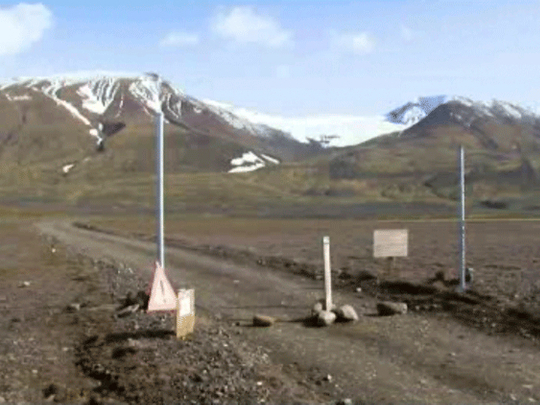
Reykjavik: Iceland on Friday issued a red alert and banned air traffic near its largest volcano after it erupted overnight, threatening a replay of the global travel chaos four years ago when another peak blew.
While Bardarbunga, located under Europe's largest glacier, had not yet started spewing ash as of early Friday, the release of a massive cloud remained a possible scenario with potentially dire consequences for aviation.
In 2010, another Icelandic volcanic eruption caused the biggest closure of European airspace in peacetime, halting 100,000 flights and stranding eight million passengers.
Iceland's Meteorological Institute, charged with monitoring volcanic activity, raised the alert to the highest level of red after the eruption.
The civil protection office said the eruption began just after midnight (0000 GMT) and had created a volcanic fissure of up to one kilometre (over half a mile) long.
"No volcanic ash has been detected by the radar system at the moment. The earthquake caused by the eruption is small, indicating an... eruption without significant explosive activity," it said.
The alert around Bardarbunga was initially raised from orange to red on August 23, which led to the closure of airspace in the affected area, although all airports in Iceland remained opened.
The aviation ban however was lifted the following day although seismic activity in the area remained high, with earthquakes shaking the volcanic system more than 20 times an hour on Tuesday alone.
One of the quakes measured 5.7, the most powerful in the area since 1996.
Several hundred people were evacuated last week from the area, which is uninhabited, with only trekking cabins and campsites used by tourists and hunters in the summer months.
Bardarbunga, in the southeast of the country, is Iceland's second-highest peak, rising to more than 2,000 metres (6,500 feet).
The eruption of Eyjafjoell, a smaller volcano, in April 2010 caused travel mayhem, in the region's widest airspace shutdown since World War II.
Iceland's most active sub-glacial volcano Grimsvotn erupted in 2011, forcing the country to temporarily shut its airspace and also sparking fears of a repeat of the Eyjafjoell flight chaos.
Iceland is home to more than 100 volcanic mountains, including some of the most active in the world.
As of early Friday, all Icelandic airports remained open, according to Isavia, the operator of the nation's airports.
But air traffic below 5,000 feet in a radius of 10 nautical miles around the site of the eruption remained closed to air traffic.
The eruption did not take place inside Bardabunga's ice-covered crater, but in a lava field a little further north, at a considerable distance from any habitation.
When the eruption was first detected early Friday, the Icelandic authorities briefly announced an air traffic ban in a larger area that included the airport of Akureyri.
Akureyri, located in the north of the nation, serves domestic routes and routes to Greenland as well as chartered flights to European cities.
On the ground, all access to the area near the volcano has been barred since August 20. The Route 1, or Ring Road, which circles the island and is the busiest road outside of the capital Reykjavik, remains fully open.
Update
Iceland reopened the airspace over the Bardarbunga volcano system Friday afternoon, lowering a red alert declared earlier following a small overnight eruption, according to an AFP report.
The Icelandic Meteorological Office, charged with monitoring volcanic activity, said it had lowered the alert level to "orange" for aviation, meaning flights could pass over the area.












